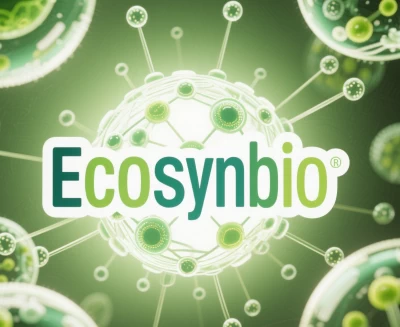
Latest Advances and Applications of Biosynthesis and Metabolic Engineering in the Bio-Cyclic Domain (2025 Update)
Biosynthesis and metabolic engineering aim to achieve efficient resource recycling and green production through engineered biological systems. Recent breakthroughs span chassis cell design, metabolic pathway optimization, and interdisciplinary integration. Below is a comprehensive analysis of the latest developments across four key dimensions:
I. Systems-Level Engineering of Chassis Cells and Metabolic Networks
- Genome-Scale Rational Design
- CRISPR-Cas-driven precision editing: Machine learning tools (e.g., AlphaFold for protein structure prediction) enable parallel editing of multiple gene loci in Corynebacterium glutamicum, tripling amino acid synthesis efficiency (e.g., lysine) .
- Non-model industrial strains: Co-culturing engineered Acetobacterium woodii and Clostridium drakei converts CO₂ and H₂ into caproate (15 g/L yield), offering a novel carbon capture and utilization (CCU) pathway .
- Dynamic Metabolic Regulation
- Light-controlled genetic circuits: Photosensitive promoters (e.g., pDawn/pDusk) in E. coli enable real-time regulation of terpenoid synthesis (e.g., taxadiene, a paclitaxel precursor), preventing intermediate metabolite inhibition .
- Metabolite-responsive biosensors: RNA aptamer-based sensors (e.g., theophylline riboswitches) dynamically balance pyruvate node flux, boosting 1,3-propanediol production by 40% .
II. Substrate Innovation and Process Integration for Bio-Cyclic Systems
- C1 Substrate Utilization
- Methanol bioconversion: Engineered methylotrophic E. coli with methanol dehydrogenase (MDH) and RuMP cycle converts methanol to malonic acid at 92% carbon efficiency .
- CO₂ electro-biohybrid systems: Electrocatalytic CO₂ reduction to formate, followed by Yarrowia lipolytica-mediated conversion to monoterpenes (e.g., limonene), achieves 65% energy efficiency .
- Industrial Waste Upcycling
- Acetone valorization: Electrochemical hydrogenation converts waste acetone to isopropanol (IPA), which Pseudomonas putida metabolizes into polyhydroxyalkanoates (PHA), closing the “waste-to-plastic” loop .
- Lignin depolymerization: Engineered Rhodococcus opacus metabolizes lignin derivatives (e.g., vanillin) to synthesize β-carotene (2.1 g/L yield) .
III. Automation and AI-Driven Acceleration of the DBTL Cycle
- High-Throughput Experimentation
- Microfluidic droplet screening: Fluorescence-activated cell sorting (FACS) evaluates 10⁶ yeast mutants for terpenoid synthesis capacity in one day—100× faster than traditional methods .
- Robotic strain construction: The UK’s “BioAuto” platform assembles and tests 500 metabolic pathway combinations weekly, accelerating strain iteration .
- AI Prediction and Optimization
- RetroPath2.0: A deep learning retrosynthesis tool designs a 12-step non-native pathway from glucose to artemisinic acid, achieving 85% experimental validation efficiency .
- Dynamic flux modeling: The jQMM library integrates 13C metabolic flux analysis and FBA to predict optimal gene knockouts in E. coli, doubling 1,4-butanediol production .
IV. Interdisciplinary Convergence and Emerging Applications
- Synthetic Biology × Electrochemistry
- Microbial electrosynthesis (MES): Engineered Shewanella oneidensis uses cytochrome networks to reduce CO₂ to butyrate with 89% current efficiency .
- Bio-photoelectrochemistry: Synechocystis-perovskite solar cell hybrids achieve 8% solar-to-biomass efficiency, advancing sustainable biofuel production .
- Agricultural and Ecological Solutions
- Nitrogen-fixing microbes: CRISPR-edited Klebsiella variicola secretes nitrogenase in non-legume rhizospheres, reducing fertilizer use by 50% .
- Plastic degradation: Ideonella sakaiensis with PETase/MHETase and enhanced TCA cycle degrades PET at 1.2 g/(L·h) .
Challenges and Future Directions
- Technical Bottlenecks
- Cellular robustness: Prolonged fermentation stability requires solutions for epigenetic silencing of dynamic regulators.
- Multi-omics integration: Unified frameworks are needed to harmonize genomic, metabolomic, and proteomic data in real time .
- Sustainability and Ethics
- Lifecycle assessment (LCA): Bio-hybrid systems must achieve >50% net carbon reduction for commercial viability.
- Biosecurity: Synthetic organism release must comply with updated Cartagena Protocol guidelines to prevent horizontal gene transfer .
Conclusion
Biosynthesis and metabolic engineering are driving the transition from linear to circular economies. By integrating genome engineering, AI, and cross-disciplinary strategies, the field is poised to scale carbon-negative biorefineries and zero-waste biomanufacturing cities by 2030, underpinning global sustainability.




